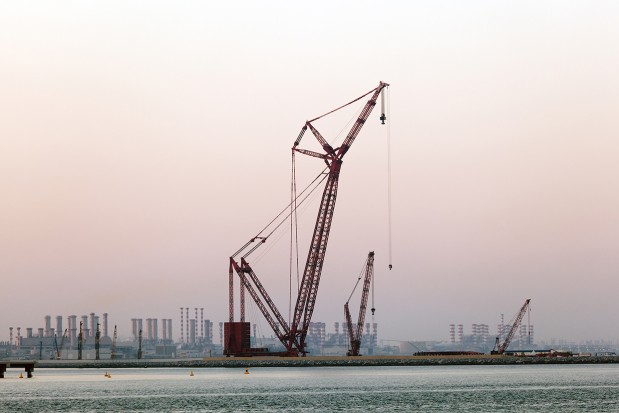Asian infrastructure gap rises to US$26tn

Developing Asia needs US$26tn investment in its infrastructure by 2030 to maintain its growth momentum and respond to climate change.
New data from the Asian Development Bank (ADB) says that the investment needs to be spread amongst power (US$14.7tn), transport (US$8.4tn), telecoms (US$2.3tn), and water and sanitation (US$800bn).
On an annual basis, the total required investment is US$1.7tn – this is more than double the amount the ADB advised was required in 2009 (US$750bn). Much of the increase is due to climate-related infrastructure requirements, as well as the rapid growth in the region, which in itself generates new infrastructure demand.
Looking at it in geographical terms, East Asia requires the most investment, accounting for 61% of the total infrastructure spend. However, other parts of Asia require a higher percentage of GDP to be reinvested in their infrastructure (South Asia is the highest, at 8.8%).
The challenge is made clear by the fact that the region invests around US$881bn in infrastructure each year. This, ADB analysts calculate, shows an infrastructure investment gap of 2.4% of GDP. In China, this gap rises to 5% of projected GDP, despite Beijing’s regular enormous investments on infrastructure.
Most of this finance comes from government purses. Just US$63bn is invested in infrastructure around Asia by the private sector each year, but the ADB estimates that if these lofty targets are to be met, private finance will have to pay for 61% of projects.
Meanwhile, multilateral development banks combined contributed about 2.5% to Asia’s infrastructure investment in 2015. While this was before the Asian Infrastructure Investment Bank (AIIB) started lending, it lent just over US$1bn in its first year in operation – a drop in the ocean, given the level of investment required.
Asia’s infrastructure gap is often cited as one of the major impediments to trade and investment. In Jakarta, it can often take upwards of four hours to travel from the airport to the city centre, while the first phase of the expressway linking Manila with its Ninoy Aquino International Airport opened in September of last year, after years of delays.
Belt and Road
Perhaps the most significant source of funding for Asian infrastructure projects in the last couple of years has been the Chinese government’s One Belt, One Road (OBOR) initiative, which is aimed at constructing trade infrastructure along the land and maritime routes of the ancient Silk Road, which connected East Asia with Europe.
For example, in Pakistan, China has pledged to spend US$54bn developing the China-Pakistan Economic Corridor (CPEC), a collection of transport infrastructure projects that will help transport Chinese goods through Pakistan and outbound to Africa and West Asia through a seaport at Gwadar.
However, private financiers are still uncomfortable funding long-term infrastructure projects in many parts of Asia. Levels of political risk vary throughout the region, but the recent slowdown in global trade, along with the slump in commodity prices that shocked the region after 2014 has dampened the lending appetite of commercial banks.
Combine these issues with the macroeconomic challenges facing the world, including the potential fallout from Brexit and the volatility of the US under Donald Trump, and it is doubtful whether the private sector’s risk appetite will be growing any time soon.
The ADB is looking to public-private partnerships (PPPs) as being a model in which private finance can be funnelled into costly projects.
“Regulatory and institutional reforms are needed to make infrastructure more attractive to private investors and generate a pipeline of bankable projects for PPPs. Countries should implement PPP-related reforms such as enacting PPP laws, streamlining PPP procurement and bidding processes, introducing dispute resolution mechanisms, and establishing independent PPP government units. Deepening of capital markets is also needed to help channel the region’s substantial savings into productive infrastructure investment,” the report reads.
The discussion over PPP in Asia is not new, however. There has been awareness of its benefits for many years, and yet the model has never really taken off. How exactly the ADB’s recommendations can be implemented is unclear.
“The problem we have with project finance in Southeast Asia, if you look at Singapore where all the players are domiciled, it’s really the deal flow. It’s been very slow. PPPs as a concept haven’t materialised to the extent people would like, there’s not enough deals on the market,” Roddy Adams, managing director of infrastructure finance at Atkins Acuity recently told GTR.
The view of Adams and many other experts in this area is that the governments of the region do not provide the kind of robust pipeline of projects that would entice banks and institutional investors to get involved – nor do they provide investment stability.



Comments
Post a Comment